- News
- Reviews
- Bikes
- Accessories
- Accessories - misc
- Computer mounts
- Bags
- Bar ends
- Bike bags & cases
- Bottle cages
- Bottles
- Cameras
- Car racks
- Child seats
- Computers
- Glasses
- GPS units
- Helmets
- Lights - front
- Lights - rear
- Lights - sets
- Locks
- Mirrors
- Mudguards
- Racks
- Pumps & CO2 inflators
- Puncture kits
- Reflectives
- Smart watches
- Stands and racks
- Trailers
- Clothing
- Components
- Bar tape & grips
- Bottom brackets
- Brake & gear cables
- Brake & STI levers
- Brake pads & spares
- Brakes
- Cassettes & freewheels
- Chains
- Chainsets & chainrings
- Derailleurs - front
- Derailleurs - rear
- Forks
- Gear levers & shifters
- Groupsets
- Handlebars & extensions
- Headsets
- Hubs
- Inner tubes
- Pedals
- Quick releases & skewers
- Saddles
- Seatposts
- Stems
- Wheels
- Tyres
- Health, fitness and nutrition
- Tools and workshop
- Miscellaneous
- Buyers Guides
- Features
- Forum
- Recommends
- Podcast
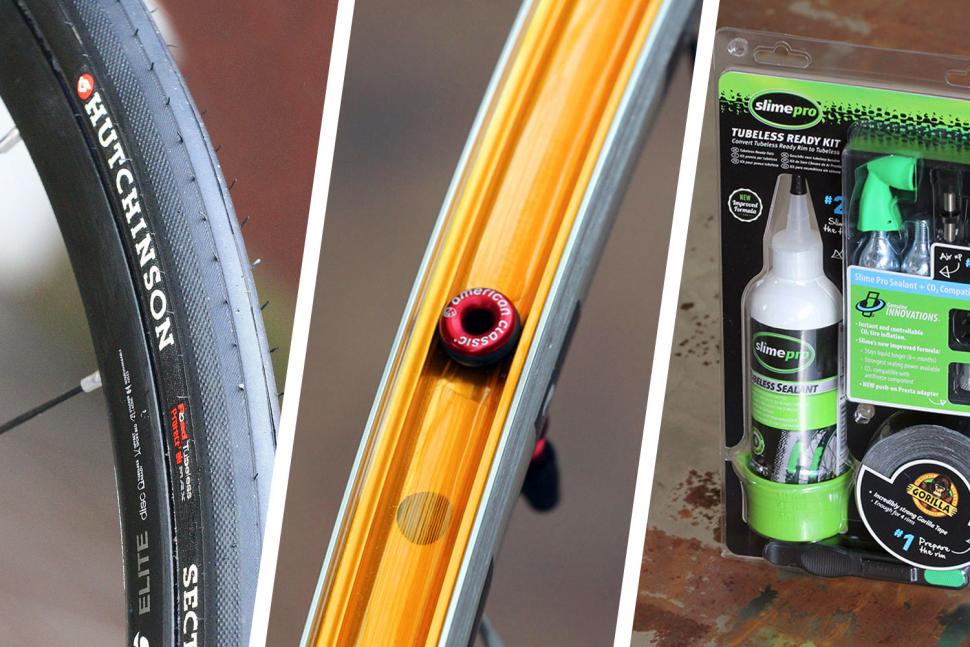 Time to switch to tubeless? August 2018
Time to switch to tubeless? August 2018Should you get tubeless tyres? Are they your best option?
[This article was last updated on November 9, 2019]
Your car has tubeless tyres. Mountain bikes have by-and-large moved over to tubeless tyres in the last decade. And now it’s available for road bikes. Well it has been available for some time, though it’s been slow to catch on; but there’s ever-increasing choice now and a growing number of cyclists are making the leap. Is it time you did too?
But what are the advantages to ditching the inner tubes? Just what are the pros and cons?
Read more: How to fit tubeless tyres
What is tubeless?
Tubeless is basically a clincher tyre inflated onto a rim with no inner tube. Instead of an inner tube holding the air pressure, an airtight chamber is created with a tubeless-specific tyre, developed with a special (commonly carbon) bead, and a compatible rim. The tyre bead locks into the rim and forms an airtight seal that maintains the pressure.
Road tubeless was first brought to market by Hutchinson and Shimano in 2006 (though Mavic and Michelin had a stab earlier in 2004) but it’s fair to say it wasn’t immediately a runaway success.
Why is that? For starters, most professional riders don’t use tubeless, which for a lot of cyclists is enough reason not to use it. Tubular tyres are still dominant in the professional peloton because it’s a weight obsessed sport, and tubulars still offer the lightest setup. It’s also because a tubular stays on the rim during a rapid loss of air. Fitting a tubular tyre is a lot of hassle though, and much more tricky than fitting a tubeless tyre.
Clincher tyres with inner tubes are still popular because they're simple and work well. Most people can easily change an inner tube and punctures can (if you’re lucky) be quite rare. There’s also no issue with compatibility. Any tyre will fit to any rim, and the market is awash with a staggering choice of both.
The last holdouts enter the fray
The biggest news in tubeless tyres is the recent arrival in the sector of tyre giants Continental and Michelin, the last major tyre manufacturers to announce tubeless tyres. Continental came in with a tubeless version of their new top-end road tyre, the Grand Prix 5000, and followed up with gravel tyres. Michelin have launched a tubeless member of their Power series, the Power Road, an all-round racing and training tyre.
But you have to wonder if those two tyre manufacturers would have got into tubeless without the invovement of wheel maker Mavic, which announced its Road UST (Universal System Tubeless) wheel/tyre system in June 2017.
Mavic says Road UST is easier to use and safer than previous tubeless systems and has put its production facilities where its mouth is, with a range of 15 wheels.
The difference between Mavic’s system and others is that there’s tight control over production variances, Mavic says. Variation in tyre bead stiffness and size affects safety as well as ease of installation and removal. Keeping the tolerances small is crucial to the success of the system.
Mavic says that Road UST is going through the approval process to become a standard recognised by both ISO (International Organization for Standardization) and ETRTO (European Tyre and Rim Technical Organisation) working groups.
Read more: Buyer's guide to tubeless tyres — all your options in new technology rubber
What are the advantages of tubeless?
Why go tubeless at all then? The main advantage, and it’s a big one, is the substantially reduced risk of puncturing. There is no inner tube to puncture, whether from sharp objects penetrating the tyre or, more rarely, pinch flats when the inner tube is squashed between the rim and tyre.
To get the best out of tubeless, and to provide the extra puncture resistance in the absence of the inner tube, there is one extra ingredient that is needed: liquid sealant. This sloshes around inside the tyre and then reacts with air when the tyre casing is punctured, and plugs the hole. It can seal most small holes caused by flint or thorns and while you might suffer a small drop in pressure, you can continue riding.
They’re faster. Because there aren't two layers of material (tyre and tube) pressing against each other and the tyre can deform more easily, the rolling resistance is often claimed to be lower. If German tyre company Schwalbe's claims are to be believed, its latest One Pro tubeless tyre is the fastest tyre it has ever manufactured. It could be just saying this to sell tyres of course, but it still produces top-end clincher and tubular tyres, so it’s not like it has abandoned traditional tyre technology just yet.
Review: Schwalbe One Tubeless tyres
Moreover, with no inner tube and therefore no risk of pinch punctures, a tubeless tyre can be run at a lower pressure. This provides increased comfort as there is more cushioning from the tyre. Tubeless tyres, in our experience, provide exceptional comfort with a compliant and supple ride that surpasses most clincher tyre and inner tube combinations.
However, while this ability to run lower pressures is appealing to mountain bikers, who appreciate the increased grip and elimination of pinch flats, traditional road cyclists are unlikely to be interested in dropping pressure in narrow tyres. If your track pump only knows 120 psi, then the advantages of tubeless might be lost on you.
In our experience, a tubeless tyre is best run 10-20 psi lower than an equivalent clincher tyre with no degradation in performance. As the trend moves towards wider tyres though, being able to safely run reduced pressures makes a lot more sense. The prevalence of endurance bikes with 28mm and wider tyres, and gravel and adventure bikes with even wider tyres, make a strong argument for tubeless.
Are there any downsides?
Unfortunately, there are a few downsides to converting to road tubeless. You don't have quite as wide a choice of wheels and tyres, but that has improved dramatically in the last couple of years. Many wheel manufacturers now offer tubeless compatible wheelsets, with some providing dual compatibility with regular clincher tyres, providing an ideal upgrade path. If you’ve bought a new bike recently, it might very well have tubeless-ready rims.
Review: Stan's NoTubes Alpha 340 Wheels
While wheel choice has improved, tyre choice is still a bit restricted and is really the big hurdle to converting to tubeless. The tyre company showing the most interest, and commitment, is German company Schwalbe. I’ve been really impressed with their recent tyres, and there’s very little weight penalty or difference in ride quality. Other choices include Vittoria, Bontrager, but so far big players such as Continental and Michelin have shown little interest in offering tubeless tyres.
Most critically, installing a tubeless tyre isn’t quite as straightforward as popping an inner tube in. That’s not helped by a lack of a single unified standard that all tyre and rim manufacturers adhere to, leading to some compatibility issues between certain combinations of rim and tyre. As well as a tubeless tyre, you need a compatible rim which might involve fitting a special rim strip, a tubeless valve (and it needs to be long enough and threaded so you can get the pump on it) and a bottle of sealant.
If you’re upgrading it’s quite a costly exercise. If your bike has tubeless wheels when you’re in luck as you just need the tyres, valves and sealant. Some manufacturers are starting to sell bikes with tubeless-ready tyres and even supply the valves, so making the tubeless conversion is much less costly. The benefits however might outweigh the initial outlay - and you’ll save money on inner tubes.
A tubeless tyre isn’t invincible. The sealant can deal with most smaller holes but anything big, like a slash or cut, will require you to fit an inner tube, so you still need to carry a spare or two. To be fair to tubeless, any cut of a reasonable size would also cause a puncture in a tubed setup.
Converting to tubeless: a brief guide
If you like the sound of tubeless, what do you need?
Read more: Reviews of tubeless tyres, wheels and accessories
You need tubeless compatible rims. There is now a lot of choice (Shimano, Campagnolo, American Classic, Stan’s etc) and they either come with a rim bed that doesn’t have any spoke holes, or a rim strip ready fitted. With some tubeless ready wheels you need to remove the basic rim tape and install a special rim strip. This makes the rim airtight.
Review: Bontrager Affinity Elite Road Disc wheelset
Then you need a tubeless tyre. Schwalbe is arguably leading the way at the moment, with the One Pro race tyre but also wider options for the emerging gravel market. Vittoria, Bontrager, and Hutchinson also offer tubeless ready tyres.
Review: Hutchinson Sector 28mm tubeless tyre
While it is possible to bodge a tubeless set-up with a regular clincher tyre and non-tubeless rim, it really isn’t recommended and could be potentially dangerous. Tubeless tyres are designed to ensure the tyre bead locks securely into the rim so it can't dislodge at high pressure, which is something you definitely don’t want to happen. This is the critical element of a successful tubeless setup and is why some companies haven’t developed a tyre yet. You might get away with regular rims but you definitely need proper tubeless tyres.
A regular tyre uses an aramid bead, and without an inner tube, can blow off the rim at high pressure. Tubeless tyres use a non-stretch carbon fibre bead — this was the big breakthrough by Hutchinson — that prevents the tyre blowing off the rim.
Tubeless valves. These are standalone valves with a rubber bung on one end that butts up against the inside of the rim, and a locking nut that tightens the valve onto the rim. There are many different makes of tubeless valve, our recommendation is to get one that is compatible with your rim. Look for a removable core - this can make inflating and adding sealant easier, and a lots of thread to screw a track pump onto. The valve needs to be long enough for the depth of your rim.
And don’t forget a bottle of sealant. There is plenty of choice on the market and it’s more or less the same stuff. The sealant should remain liquid in the tyre for up to six months, provided you have no punctures that allow it to escape during that time. Some sealants are 100% free of ammonium so is environmentally harmless.
Bontrager offers an upgrade kit (it’s pricey though) that includes everything you need to convert to tubeless, bar the wheels. It includes tyres, rim strips, valves and sealant.
Another option is the Slime Pro Tubeless Ready Kit, which provides a bottle of sealant, a roll of rim tape, tubeless valve, tyres levers and a CO2 canister for inflating the tyres. It aims to allow you to use a regular non-tubeless rim but you must use a proper tubeless tyre.
See our in-depth guide to fitting tubeless tyres
Should you convert to tubeless?
Tubeless still has a little way to go before it is as universal as it is in the mountain bike world. For tubeless to really take over from conventional clincher tyres, the installation process needs to be much easier, as at the moment it requires an investment of time and expertise. It’s also costly, especially if you need to factor in the cost of new wheels and tyres.
Tubeless also needs commitment from other tyre and wheel manufacturers to widen the choice, and there needs to be a common standard to provide the compatibility to eliminate the current installation woes that can create a sour first experience of road tubeless. One thing is for sure, people that have converted to tubeless have become fans, as once you experience it, it’s very hard to go back.
There are clear benefits to tubeless (reduced flats, lower pressures, ride quality and they’re faster) but it won’t save you any weight. However, if you’re prepared to invest the time, and money, in converting to tubeless, you probably won’t look back. It won’t be for everyone, but tubeless is here to stay and its future looks bright if our experience is anything to go by.
David worked on the road.cc tech team from 2012-2020. Previously he was editor of Bikemagic.com and before that staff writer at RCUK. He's a seasoned cyclist of all disciplines, from road to mountain biking, touring to cyclo-cross, he only wishes he had time to ride them all. He's mildly competitive, though he'll never admit it, and is a frequent road racer but is too lazy to do really well. He currently resides in the Cotswolds, and you can now find him over on his own YouTube channel David Arthur - Just Ride Bikes.
Latest Comments
- timmyotool 41 min 49 sec ago
The only gilet I'd buy would be the ultra packable type, and I've not seen anything lighter (sub 40g) than the sportful ultralight. That's now...
- marmotte27 2 hours 17 min ago
Don't forget, each of these places is a life hazard.
- VeloUSA 4 hours 53 min ago
It seems what you're searching for is a USB Micro to USB Type-C.
- Owd Big 'Ead 6 hours 55 min ago
Shetland Islanders must be a right bunch of Jessie's these days. The total population of the islands is less than 23,000 and Lerwick where the...
- ajuk.uk@gmail.com 7 hours 10 min ago
The same author seems to show something that looks like a shared space in his peice about the 85th percentile speed. However rather than an fully...
- Oldfatgit 8 hours 31 min ago
Strange how report results tend to match the expectations of those that paid for them.
- imajez 9 hours 15 min ago
It should be noted that socialism doesn't prevent folk from starting or running their own succesful busineses. It's about making sure no-one get...
- ktache 10 hours 7 min ago
London does seem to exist, making it REAL, and also seems to be part of the WORLD, it is not a figment of someone's imagination, so by being there,...
- ktache 11 hours 9 min ago
Look at London and the way that better infrastructure has encouraged cycle use. On some stretches the bicycle is the most numerous vehicle type....
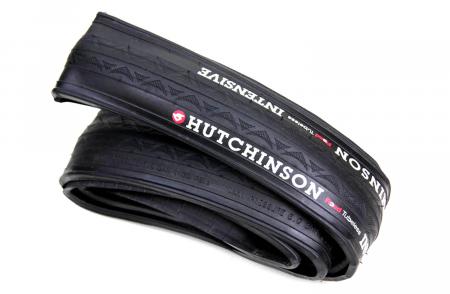

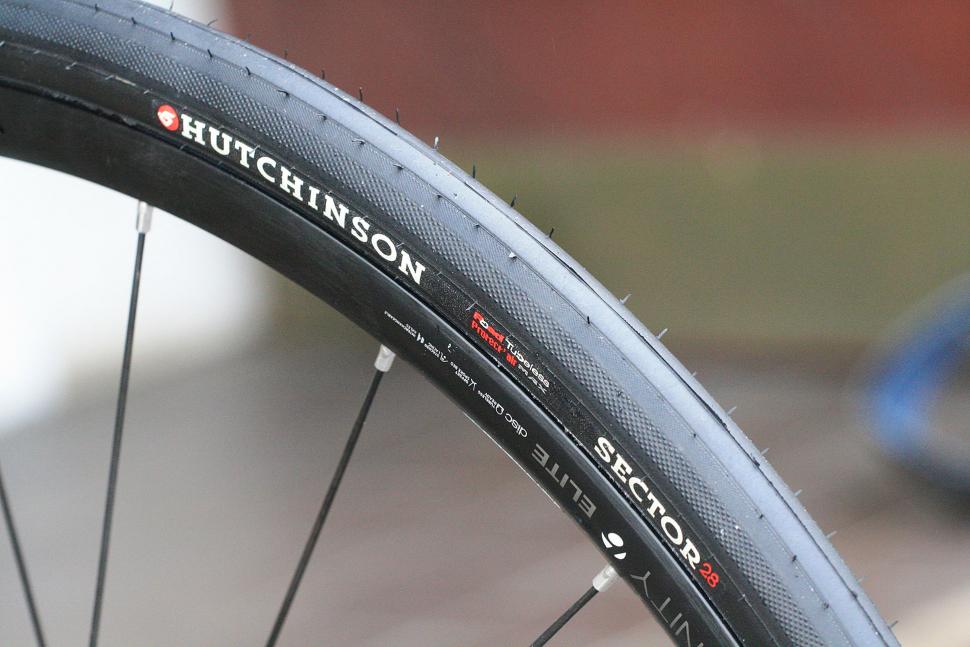

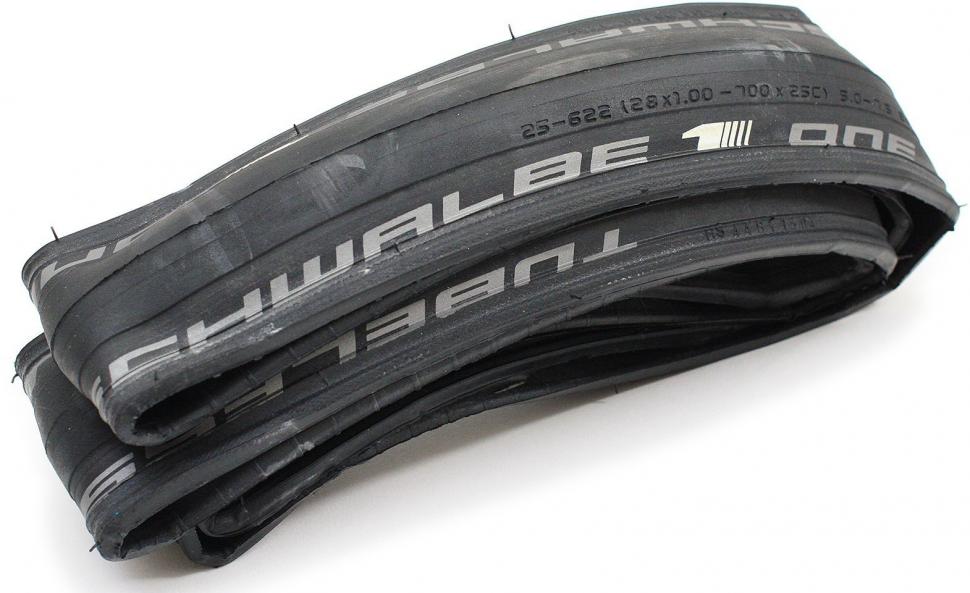


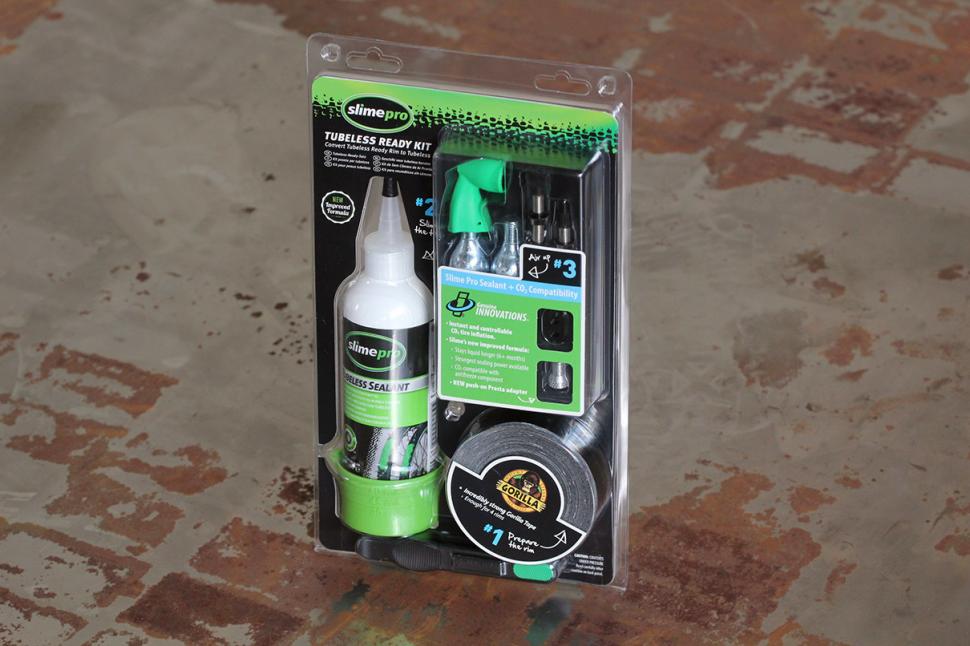
Add new comment
88 comments
I find it odd that so many of you complained about pinch flats with tubed tires, I haven't had a pinch flat in 35 or 40 YEARS!!
I ride mostly road bikes, up until the last couple of years I rode exclusively on 700x23c tires, I now use 25's. I ride mostly on surface streets; and most the streets I ride on are poor quality, from the streets in Los Angeles that the city couldn't afford to repair, to roads in the Mojave Desert of California that buckled from the heat, to streets in NE Indiana that crack due to the freeze and thaw cycles. So I don't ride on pristine roads.
I've been runnig tubeless on the MTB since 2002. I've benn running tubeless on the gravel bike since 2016. I've also been (trying) to run tubeless on the roadie with very mixed results (for the last three years). Most sealants are useless at anything above 50 psi - spurting out of tiny holes until none left, which means road tubeless is not a winner... yet. Now, I must add that I have had better results with Stan's Race as this has got some very clever stringy things in it - so much so, you cannot use a syringe to put it in the tyre in the first place - it blocks instantly.
I'm still undecided on road tubeless and I think when I need new tyres I'll go back to tubes.
I find it odd that so many of you complained about pinch flats with tubed tires, I haven't had a pinch flat in 35 or 40 YEARS!!
I ride mostly road bikes, up until the last couple of years I rode exclusively on 700x23c tires, I now use 25's. I ride mostly on surface streets; and most the streets I ride on are poor quality, from the streets in Los Angeles that the city couldn't afford to repair, to roads in the Mojave Desert of California that buckled from the heat, to streets in NE Indiana that crack due to the freeze and thaw cycles. So I don't ride on pristine roads.
What the article does not mention is what happens when you have a tubeless flat on the road.... First you and your bike will have sealant all over... then you have to pry the tire off (much harder than a clincher), deal with the mess inside and install a tube and ATTEMPT to get the tire back on (much harder than a clincher). Do it once and you will go back to clinchers.
Or you just plug it with a dynaplug tool or Stans dart tool.
I spent the best part of £50 on a Stan's dart tool and spare plugs, after I got fed up of all punctures on the Schwalbe G-One Alrounds on my gravel bike - I also switched to Stan's Race sealant and Vittoria (Terrano CX Mix) tyres at the same time. Unfortunately I've not had a puncture to test them with in the past 4 months - I was barely going 2 weeks/100 miles commuting without a puncture on the G-Ones (I'd often get two or three punctures in a week).
Unfortunately...
Once you get the hang of it fixing a puncture on a tubeless tyre is quicker than changing an inner tube.
sorry, error message made me doublepost
I just changed back from tubeless to clinchers for the same reason. I got a hole in my gp5000 to which neither the sealant nor dynaplug could deal with. Struggled to get the tyre off , which got me worried. Inner tube in, ..and then , over an hour trying to get the b...tard back on. Just did it.but blimey. I had ran gp4000s before and no punctures. So.. fitted gp5000 clinchers today..and they were not that easy either but still less than 10 minutes
If the dynaplug could not fix it, then the hole was so big, a new tyre was on the cards or there was something awry about how you tried the repair.
Exactly the same here. After two years on tubeless, I'm back to (latex) tubes. I really can't understand anymore why people want to ride road tubeless. It's a hassle fitting the tire, checking the sealant level now and then, and dealing with the mess and the horrible smell when a puncture isn't sealed. A tubeless setup with 30ml sealant per wheel is heavier then a non tubeless setup with a latex tube. It also becomes heavier over time because of all the dried sealant inside. And if you get a puncture: it takes far less time to change an innertube than trying to do the same thing with a tubeless tire that's filled with sealant. And you'll have to fit a tube anyway in most cases, because a large puncture will unbead the tire from the rim, which you can't rebead with a mini-pump.
The claimed advantages of tubeless are not convincing to me.
Lower rolling resistance? No: a latex tube has similar or even lower rolling resistance.
More puncture resistant? Not my experience: a good quality non tubeless tire (GP5000 in my case) has similar puncture protection. A tubeless setup might seal a small hole on the go, where you'll need to fit an innertube with a non-tubeless setup. But the chance of having a puncture is very low anyway with such a decent tire.
Lower pressure needed? Not my experience: I'll ride exactly the same pressures (70 psi front, 85 back) with latex innertubes with no increased amount of (pinch) punctures. The latex innertube feels more suble and comfortable than the tubeless setup with the same pressure.
Interesting to read your experiences. Maybe tubeless is a low pressure thing? Does it struggle more to seal a hole at 80psi that it would succeed with at 35psi? That appeals to reason.
My own experience is that I have not had a puncture in years, despite cycling down tow paths, bridleways and farm tracks. Would I have been better off for messing about with filling, checking, topping up and cleaning out of sealant over the years? Should I have "invested" in that expensive tank pump, syringe kit, special formula sealant and whatnot? It just doesn't add up the way the reviews and feature articles sell it.
A couple of years back I was having a bike-related chat with the young bloke re the 25mm tyre trend. He said "It's not about the tyres,Dad-next they'll want to sell you wider wheels to go with them."
To which I replied to the effect of "What-new wheels for a 2mm difference-bike riders may be gullible but they're not that stupid".
Looks like he was right.But tubeless,that's life-changing,isn't it?
I'm a total convert. Expensive, but worth it because it's making my gravel rides safer and more pleasurable. It's an utter revelation to me just how well a 650B full-mud tyre (WTB Sendero) rolls on the road sections, considering how happy it is to dig in and winch up a muddy hill. Great on sand too. Running around 40psi as I'm a heavy rider on a something that's the touring side of a gravel bike.
Problem is, when I go back to my road bike (700c, 28mm, tubes, 100psi) it feels like I'm riding on some old-school 21mm rubber.
Like the rolling resistance, think one of the German magazines showed (and Road.cc referenced in their recent review) that the new Conti GP5000 clincher with a latex tube rolled faster than the tubeless equivalent.
I discovered this on the mountainbike, using a non-tubeless tyre witha ghetto tubeless setup and sealant felt light and fast rolling, with the added benefits of no pinch punctures. But of course the lighter sidewall of a non-tubeless tyre could still pinch flat, and they leaked! Switched to a bona-fide UST tyre and the ride quality vanished. Obviously on an MTB the low pressure/pinch flat resistance was a much bigger deal so I stuck with it (actually as a side note, I'm now running latex tubes on my 29er XC hardtail, pinch flat free so far!).
Tubeless on road bikes seems like disc brakes on road bikes, a valid solution to a very specific problem, that might not actually benefit everyone.
Tubless, like disk brakes, is a solution to a specific problem... namely the need to sell more bikes.
Or it is just an alternative when you need new wheels (or fancy an upgrade on your wheels).
I question your phrase "upgrade". I tried really hard for the last 2 years to kid myself that tubeless was great but I have gone back to tubes. There is probably a very specific niche somewhere that makes tubeless sense but it is not to me for general road riding.
I've been using tubeless road tyres for years now. The biggest problem is the tyre companies - just look at the drivel up above "The difference between Mavic’s system and others is that there’s tight control over production variances."
Does this mean all those other two-bit tyre manufacturers (Panasonic, Hutchinson, etc.) are just crap? I suspect they also have tight controls. And pick a friggin' standard boys.
OTOH, they sell the tubed and tubeless versions of tyres with the same names, or bring out a "Tubless compatible/easy/ready" version of a tyre with the same name, so evn hands-on you can't figure out which is which.
More than once a "knowlegable" retailer like CRC has sent me the tube version when I ordered and paid for tubeless. Not 100% their fault. One well-known manufactuere explained to me that if the tyre brand name on the package was blue, it was tubeless ready. If brown, then not. So that's obvious...
My other pet peeve is why-oh-why anyone makes tubeless Presta valves without removable cores? (Thanks Shimano)
Some of the negatives on here haven't really aged very well.
Neither, unfortunately, have some of the advantages. This year's Paris - Roubaix saw Alex Kristoff riding tubeless and, despite the propaganda surrounding the likelihood of punctures, he suffered three separate flats that ruined his day. So much for the sealant keeping the tyres inflated.
When asked about his plans for next year he said he would be back but the tubeless tyres would not!
He is a big rider using 25mm tyres on the most unsuitable surface. Whilst most were using 30mm tyres. He just pushed the limits too far in the search for faster tyres.
For me the real benefits are a combination of puncture resistance and ride quality. With normal tubes I could generally have one of these but not both.
My rides are mixed, and I'm fond of dicerting off roads onto gravel or even some bridleway. Running 28mm tubeless tyres on 27mm external rims works a treat.
I was previously a serial puncturer. Since converting about a year ago I have had one puncture, and the result was a loss of about half the tyre's pressure to a point where the sealant was able to kick in, and I was still able to ride home with reduced pressure.
Does anyone else that is currently running tubeless find that the tyres don't hold pressure for as long as a regular inner tube & clincher set up does?
Whilst i have always checked tyre pressures prior to a ride, I find I am adding more air now I am running tubeless than I used to.
Up until recently, no, but I've got one bike which I've had to use slightly wider rim tape than I wanted to with.. that bike, yes and I can attribute it totally to the rim tape not quite being as perfect as I'd normally run.
Tubeless can be finikity, but is solid as a rock once done right.
I had issues, things improved when I started using muc off sealant. They still don't hold pressure for as long as tubes do though, but i tend to check the pressure before each ride anyway and always have.
My issue is that pro ones don't lock on to my reynolds rims. Once the deflate they pop off the rim. The odd thing is that GP4000 do lock on to the rim but aren't a tubeless trye. So next tyres will be GP 5000 and I will see how they go.
Im a convert to tubeless, primarily because of their puncture resistance. I still use inner tubes tyres on some of my bikes but with either Stans or Orange sealant to protect against punctures. I'm currently using my Schwalbe G Ones (40mm). These are a fantastic tyre if you can fit them in your frame. They have great comfort and grip, super smooth ride over all kinds of surfaces. I run between 45-50psi on the inflation this gives a lovely cushioned ride, I dont worry about picking my lines, I just ride over everything, grates, gravel, small bumps etc. These tyres just absorb the road. Also they're are quick rolling. I can ride at >20mph on flat roads and not feel that there is drag from the tyres. Ive averaged 17.5 over 100 miles, 19 @ 60 miles so these tyres dont slow you down. A fantastic all purpose tyre.
I originally ran my Hunt 4 Seasons tubeless for a few months but gave up because of all hassle involved. I recently switched to latex tubes and they give a very similar feel, faster and less rolling resistance. I still carry butyl tubes on rides in case of a puncture but I'm in no hurry to try tubeless again.
Mavic Yksion Pro UST tubeless here. Best tyre I have used so far: fast, grippy, puncture resistant, durable (3500km so far and rear tyre looks like new). Made in France by Hutchinson.
Pages